By Louise Irvine
Embellishing something that is already beautiful is known as “Gilding the Lily”. The saying can have negative connotations as the perfect flower does not need improvement. However, artists of the Aesthetic movement used glittering gold for dramatic effect on their wall plaques and tiles as can be seen at WMODA.
A Gilded Age
The lily was one of the floral emblems of the Aesthetic era and inspired the contemplation of beauty. The brilliance of gold symbolized the divine sphere and the splendor of the celestial kingdom. Many artists in the 19th century admired the mosaics and icons of the Byzantine era that shine with metallic gold. During the Neo-Gothic period, they also studied medieval altarpieces which reflected the radiant light of God and the heavenly realms.
Victorian artists used gold mosaic extensively for the Kensington Valhalla at the South Kensington Museum, now the V & A. Portraits of 35 European titans of the applied and fine arts were produced by the Salviati company during the 1860s. The use of gold for the backgrounds of these iconic works inspired artists working for the Minton and Wedgwood factories to recreate the magical effect of gold shimmering under gaslight and candlelight for domestic settings.
Henry Stacy Marks
Henry Stacy Marks (1829-1898) had a particular interest in medieval art and Shakespearean themes which he showed at the Royal Academy from 1853 onwards. The Art Journal described his “Touchstoneish humor in which his brush loves to revel” and his fascination for the Middle Ages can be seen in the Christmas cards and book illustrations that he provided for The Good Old Days: Christmas Under Queen Elizabeth published by Marcus Ward in 1876. Similar designs were used on a whimsical set of Doulton tiles entitled Fish, Flesh, and Fowl.
One of his most important commissions was the life-size allegorical panels of Astronomy and Navigation for the mosaic frieze which encircles the Royal Albert Hall in London. The Triumph of Arts and Letters was made of terracotta tesserae by Minton Hollins and Co. and executed by ladies in the South Kensington Museum mosaic class. At that time, the making of mosaics was deemed as “gentle exercise” for women. The monumental frieze was completed in time for the opening by Queen Victoria in 1871.
Minton Art Pottery Studio
Beside the Albert Hall in Kensington Gore, Colin Minton Campbell built an Art Pottery Studio in 1870 where he employed around 25 female graduates from the London art training schools. Henry Stacy Marks designed the trade card for the short-lived enterprise which was destroyed by fire in 1875. He also supplied several designs for the Minton artists to hand-paint on tiles, circular plaques, and moon flasks.
Seven Ages of Man
Shakespeare’s best known speech “All the world’s a stage” from As You Like It inspired the most famous Minton designs by Henry Stacy Marks. The melancholy Jaques delights in being sad and is inspired to become a professional jester after meeting the optimistic Touchstone. Shortly afterwards, he makes his “Seven Ages of Man” speech in which he describes the stages of a man’s life from the cradle to the grave. Victorian cartoonists had fun visualizing the steps of life and Dobbins Soap produced a set of trade cards which could be redeemed with purchase of seven bars of their electric soap.
The seven ages were reproduced on Minton’s large circular wall plaques, 19 inches in diameter, with a background of gleaming gold. The Minton archive holds the original drawings for the series which also included designs for rectangular tile panels, square tiles, and moon flasks. The Seven Ages of Man panels were displayed by Minton at the Vienna World Fair in 1873 and an early set was hung at Eaton Hall in Cheshire where Marks worked on murals for the Duke of Devonshire between 1874 and 1880.
Wedgwood
Shakespeare also inspired artists at the Wedgwood factory to create glittering gold designs notably Thomas Allen who joined from the Minton factory in 1875 and ultimately became art director. He studied at the South Kensington School of Art and had some experience at the Minton Art Pottery Studio. In the 1880s, he designed circular plaques depicting Shakespearean characters with golden backgrounds embellished with relief patterns to create a rich brocade effect.
Allen’s signature appears on the Desdemona plaque at WMODA but other artists also painted the Shakespeare plaques notably John P. Hewitt who worked briefly at the Minton Art Pottery Studio and the Copeland factory before joining Wedgwood. He later became a highly respected figurative artist for Doulton’s Burslem studio.
The WMODA collection has two original watercolors for Mistress Ford and Falstaff from Shakespeare’s Merry Wives of Windsor and we have seen the Falstaff plaque painted by different artists. The re-opening of WMODA will provide a golden opportunity to see these spectacular gilded designs.
All the world’s a stage,
And all the men and women merely players;
They have their exits and their entrances;
And one man in his time plays many parts,
His acts being seven ages. At first the infant,
Mewling and puking in the nurse’s arms;
And then the whining school-boy, with his satchel
And shining morning face, creeping like snail
Unwillingly to school. And then the lover,
Sighing like furnace, with a woeful ballad
Made to his mistress’ eyebrow. Then a soldier,
Full of strange oaths, and bearded like the pard,
Jealous in honour, sudden and quick in quarrel,
Seeking the bubble reputation
Even in the cannon’s mouth. And then the justice,
In fair round belly with good capon lin’d,
With eyes severe and beard of formal cut,
Full of wise saws and modern instances;
And so he plays his part. The sixth age shifts
Into the lean and slipper’d pantaloon,
With spectacles on nose and pouch on side;
His youthful hose, well sav’d, a world too wide
For his shrunk shank; and his big manly voice,
Turning again toward childish treble, pipes
And whistles in his sound. Last scene of all,
That ends this strange eventful history,
Is second childishness and mere oblivion;
Sans teeth, sans eyes, sans taste, sans everything.
Read more about...
A Golden Opportunity
The Midas Touch
Lily of Lilies
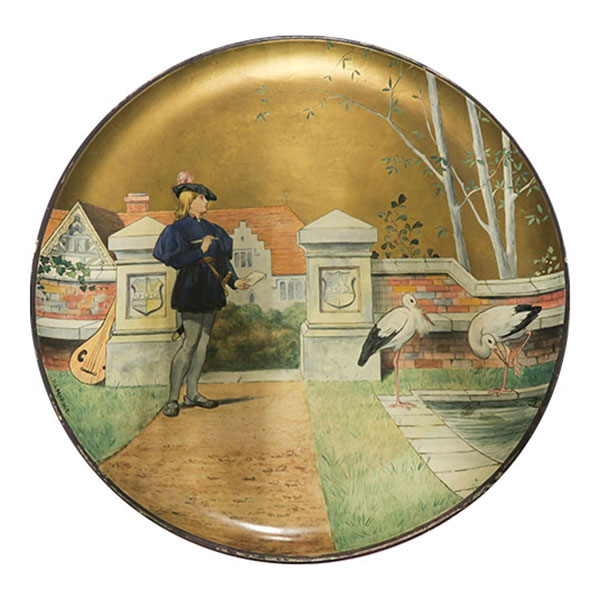
Minton The Sighing Lover
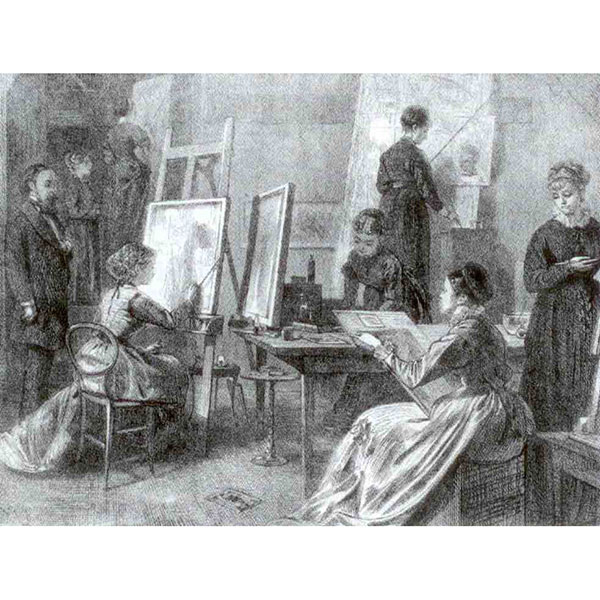
Women at South Kensington School
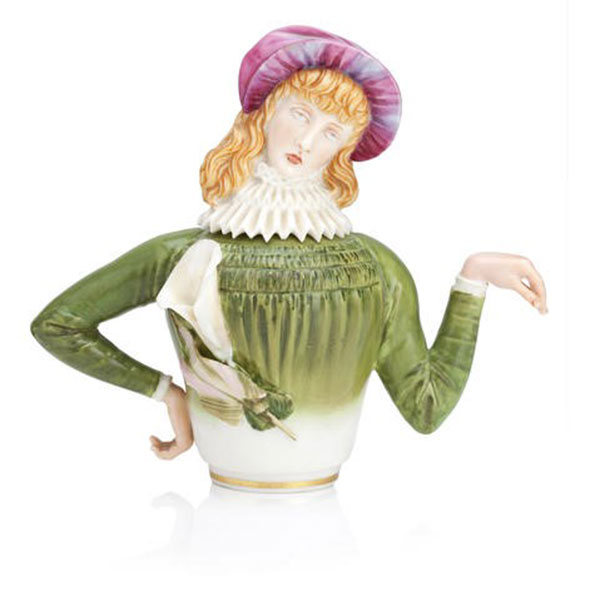
Oscar Wilde Worcester teapot 1881
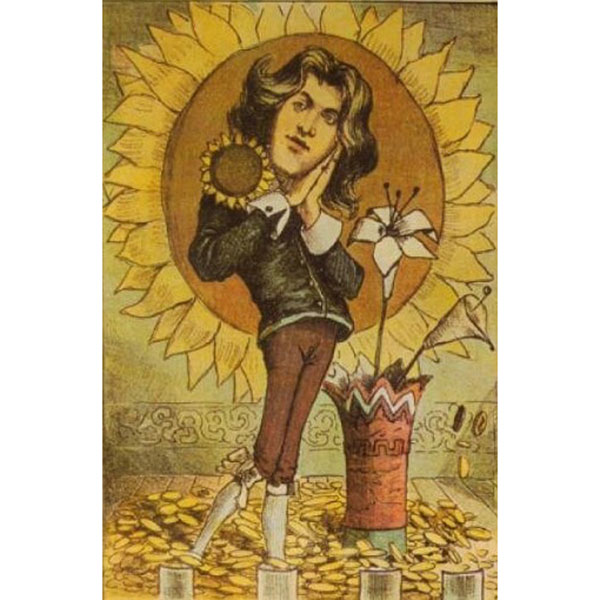
Cartoon of Oscar Wilde with Sunflower & Lily
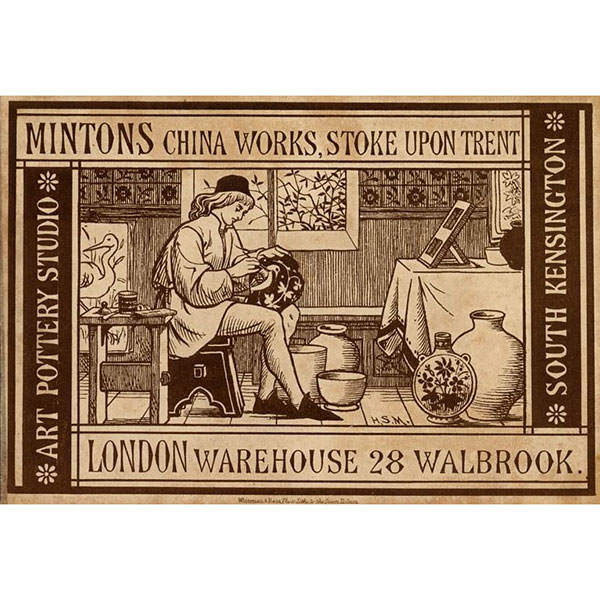
Minton Art Pottery Trade Card H. S. Marks
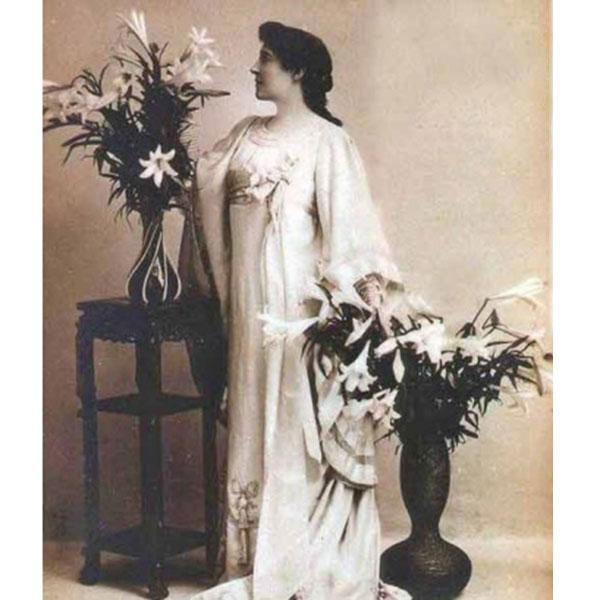
Lillie Langry with lilies
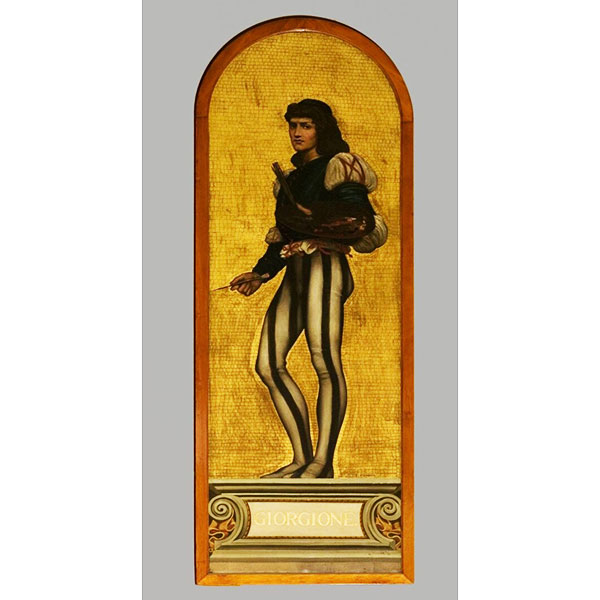
Giorgione Kensington Valhalla V & A
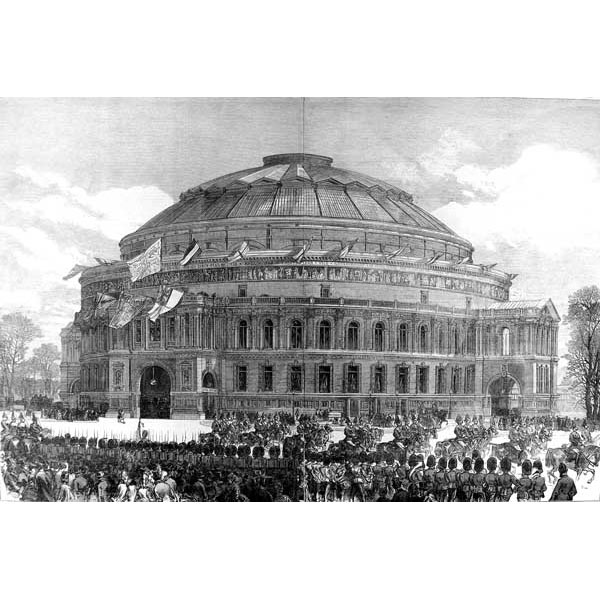
Royal Albert Hall Opening
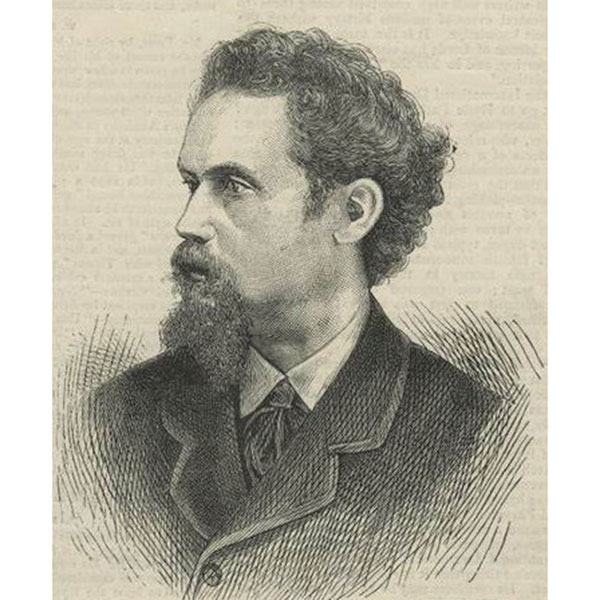
Henry Stacy Marks
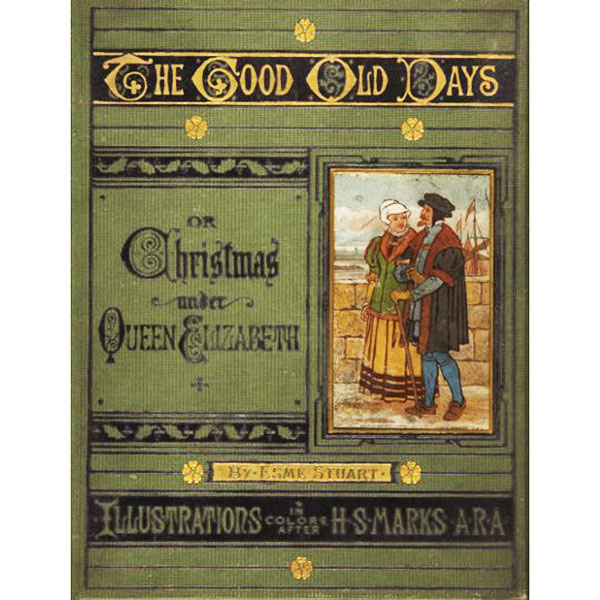
Good Old Days Illustrated by H. S. Marks
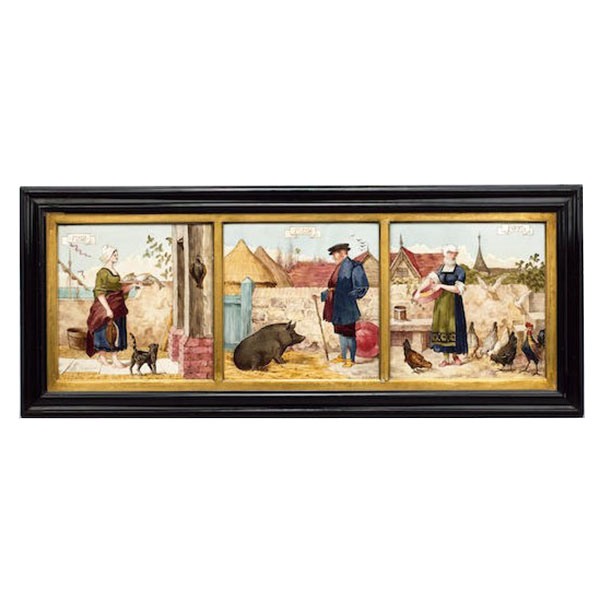
Doulton Fish Flesh and Fowl H. S. Marks
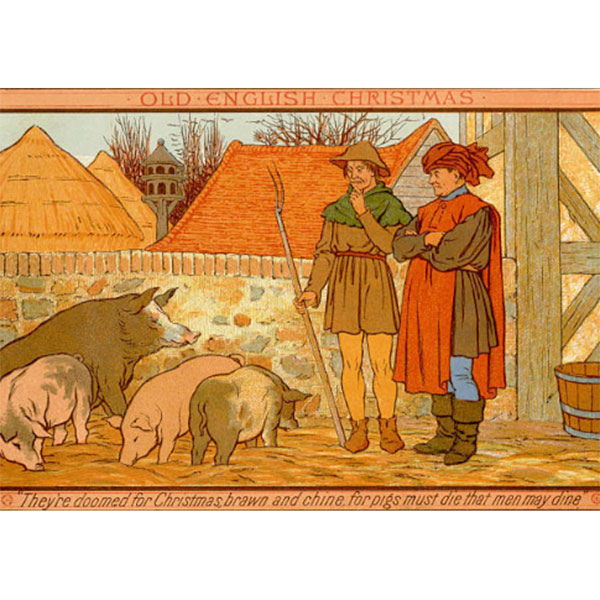
Christmas Card H. S. Marks
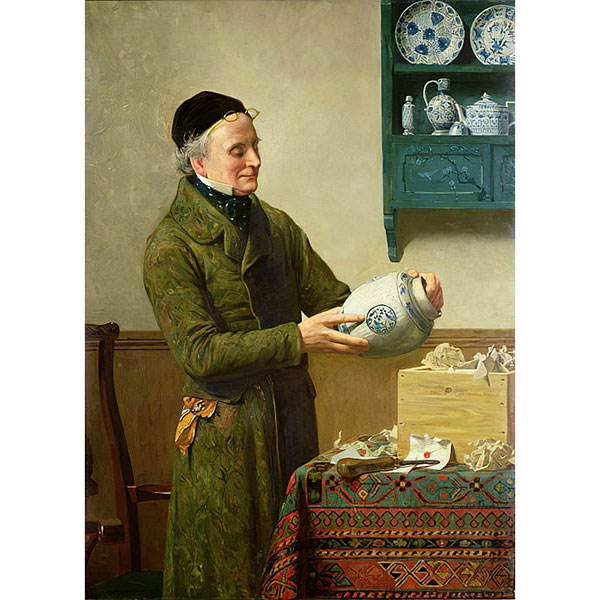
A Bit of Blue H. S. Marks
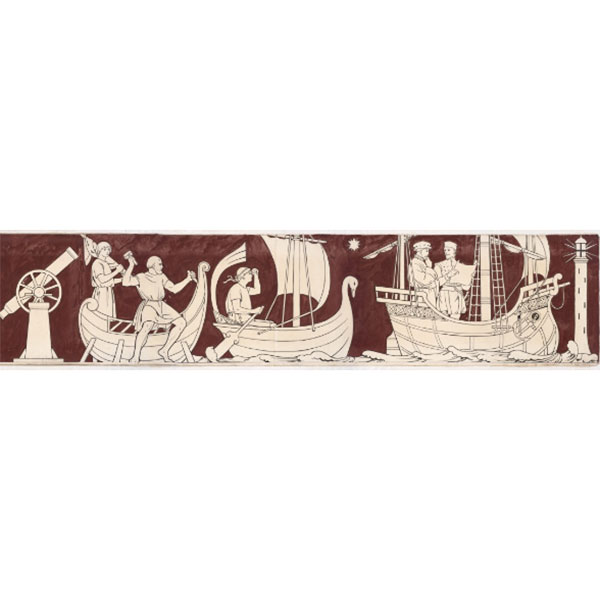
Navigation for Albert Hall H. S. Marks
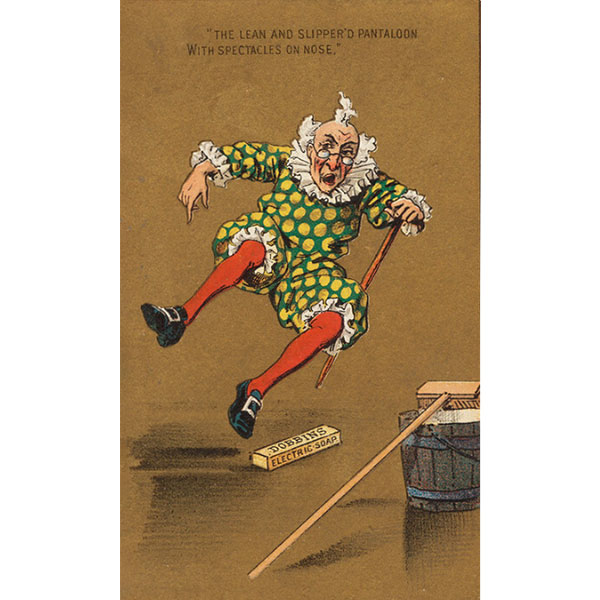
Dobbins Pantaloon Trade Card
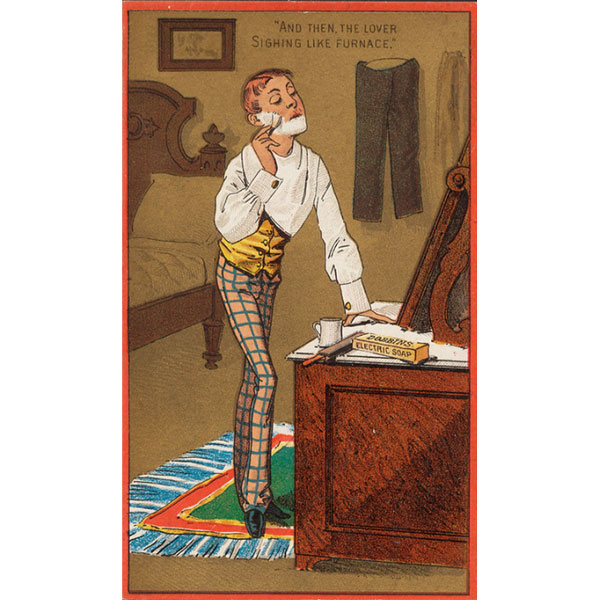
Dobbins Lover Trade Card
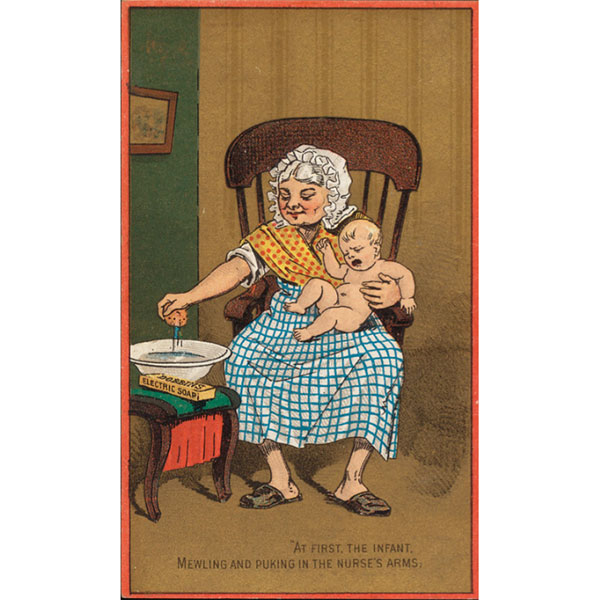
Dobbins Infant Trade Card
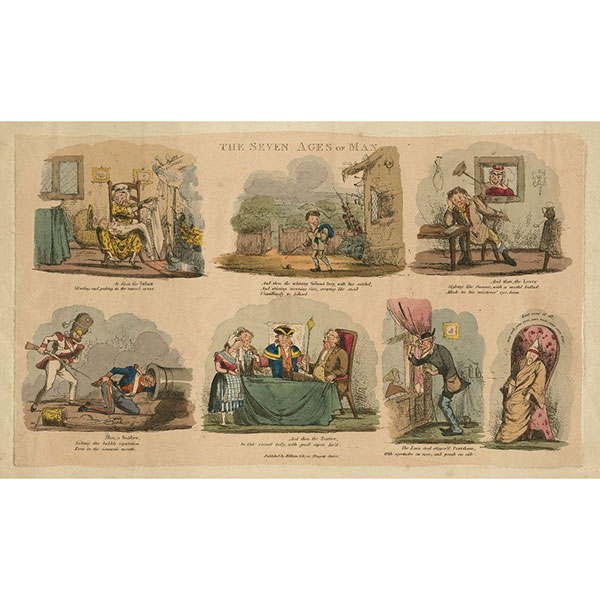
Seven Ages of Man Folger Shakespeare Library
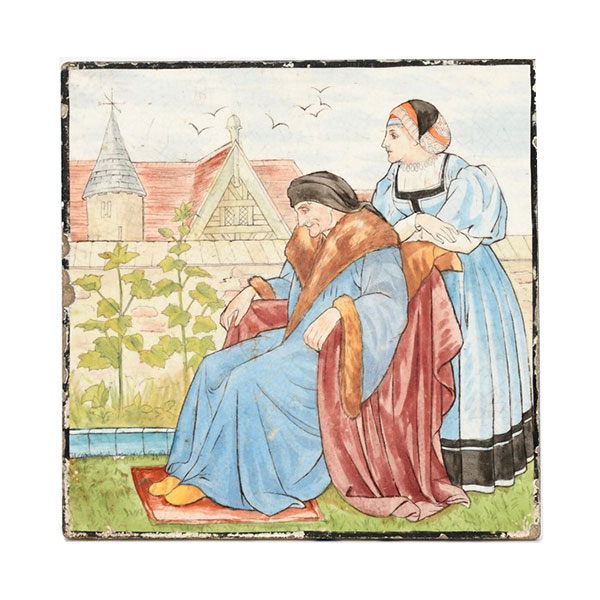
Minton Tile Oblivion
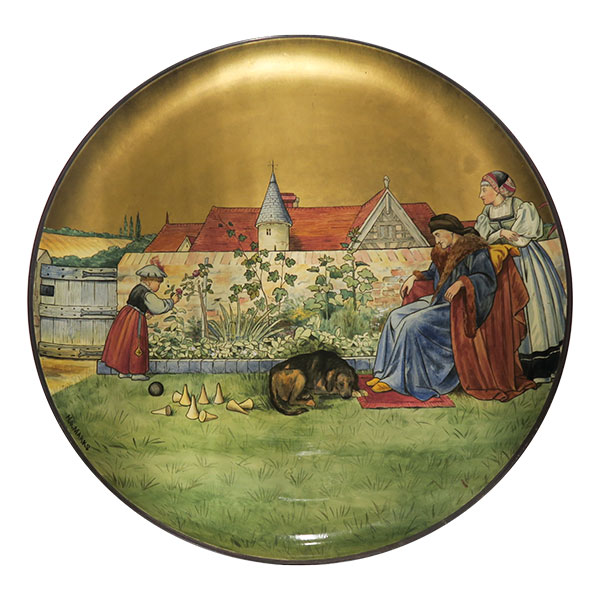
Minton Sans Everything
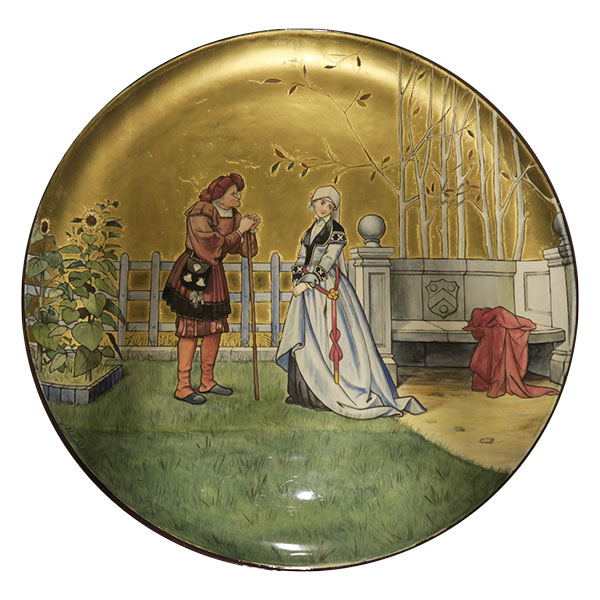
Minton The Pantaloon
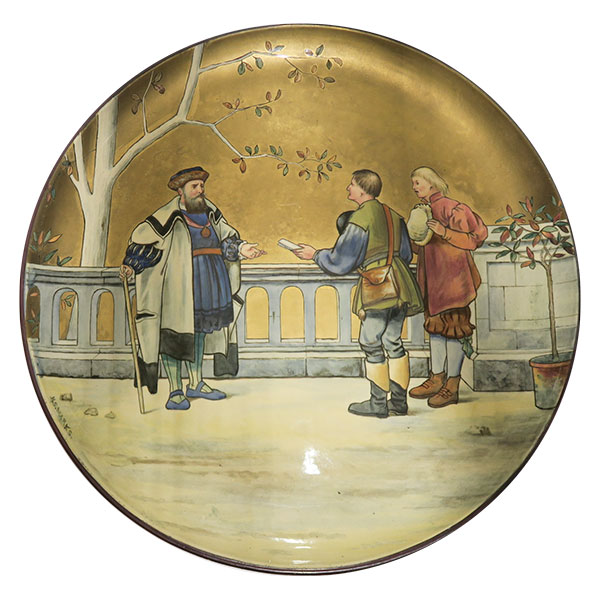
Minton The Wise Justice
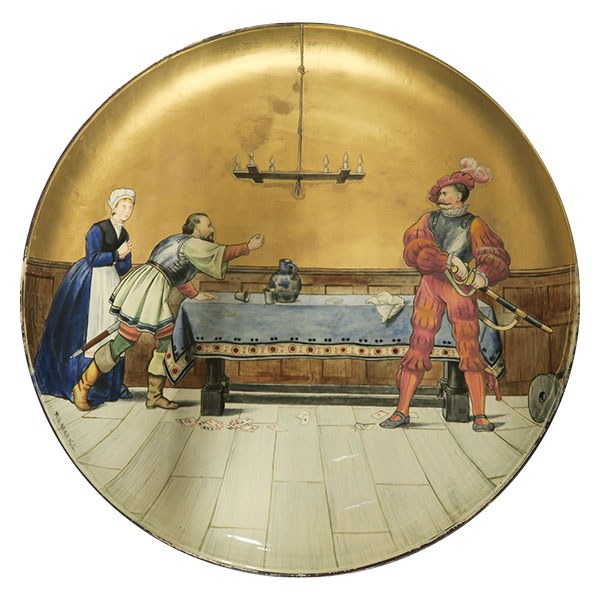
Minton The Jealous Soldier
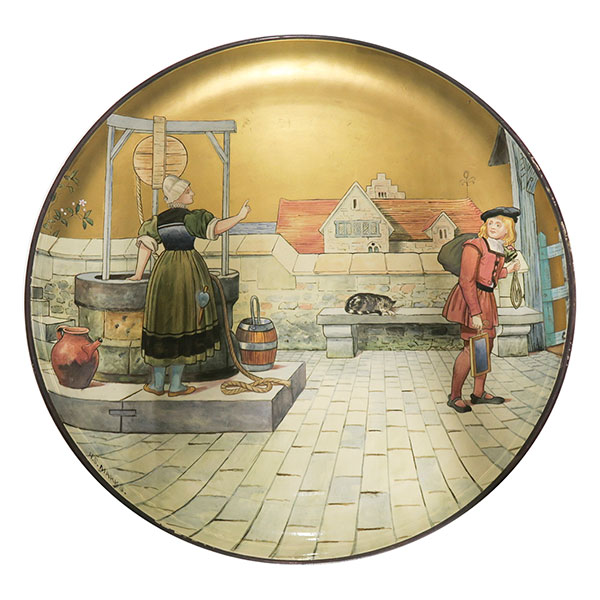
Minton The Whining Schoolboy
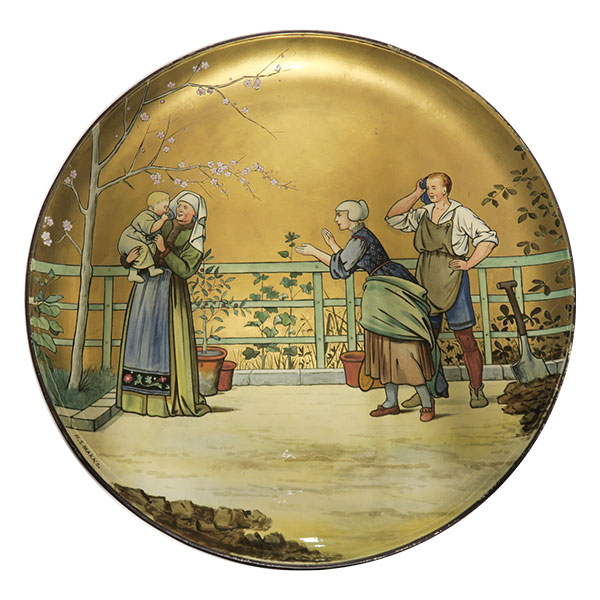
Minton The Infant
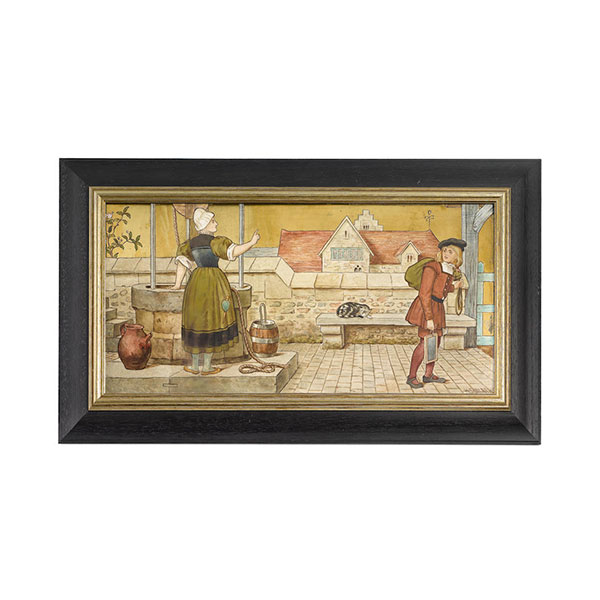
Minton The Schoolboy
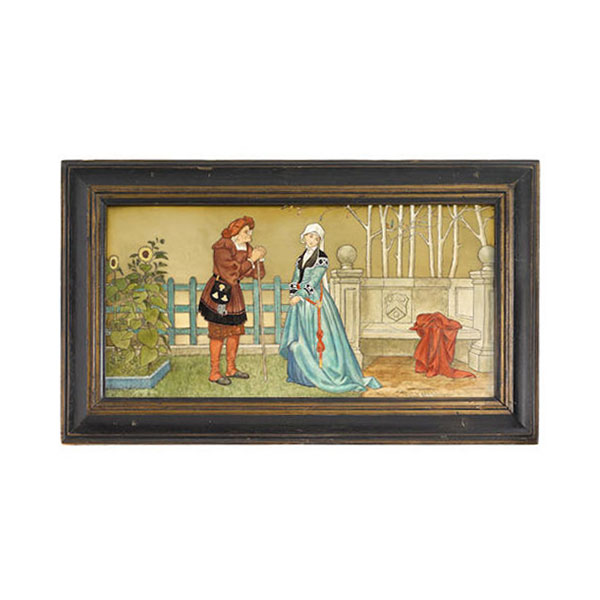
Minton The Pantaloon
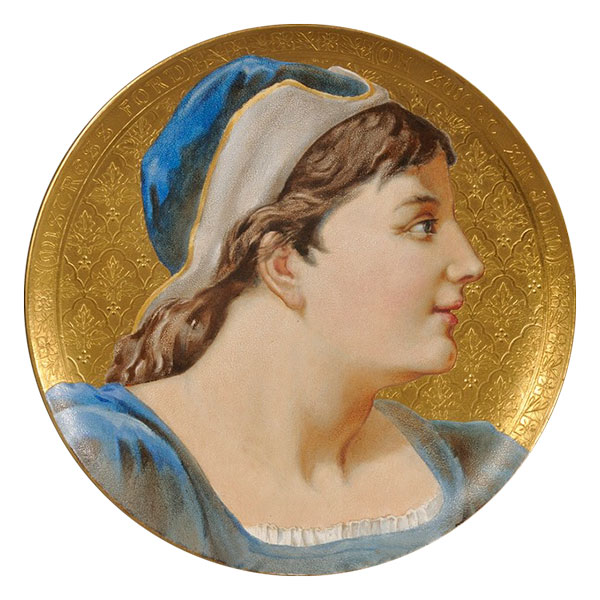
Wedgwood Mistress Ford
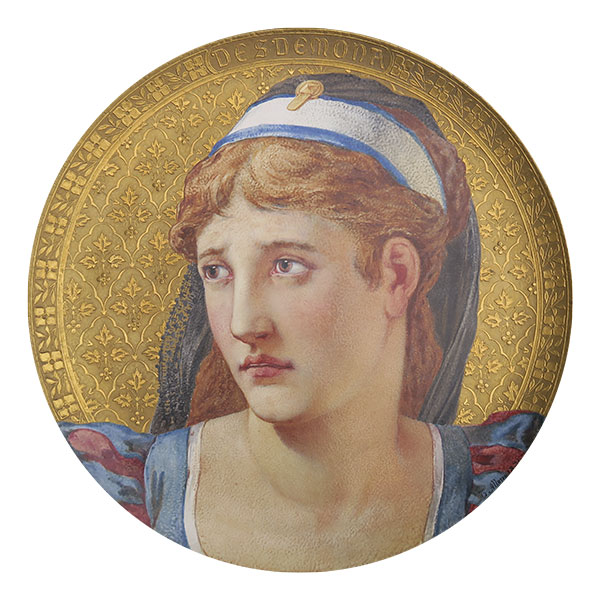
Wedgwood Desdemona T. Alllen
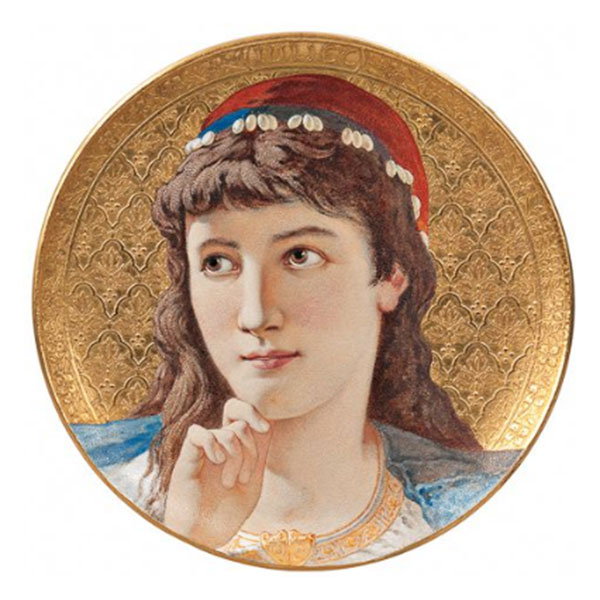
Wedgwood Juliet
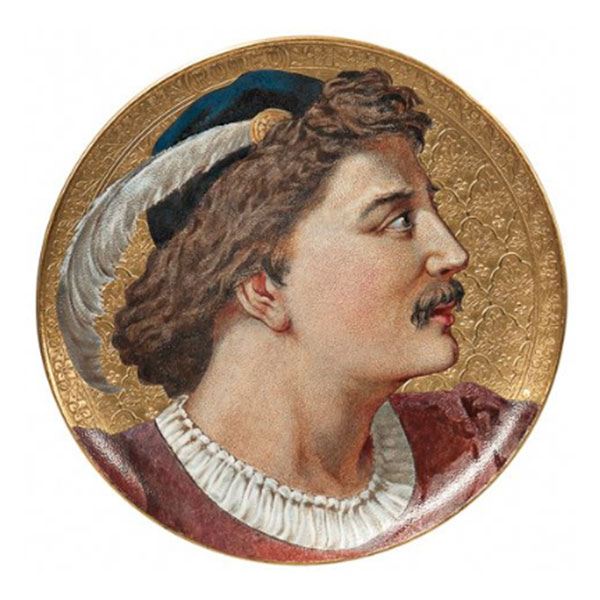
Wedgwood Romeo
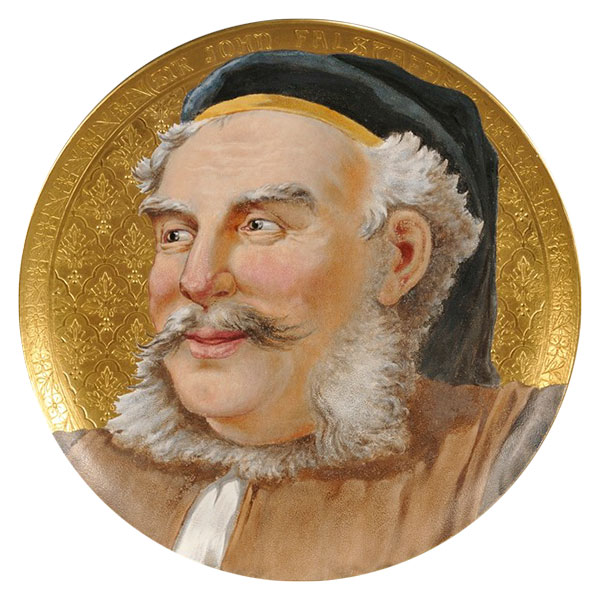
Wedgwood Falstaff
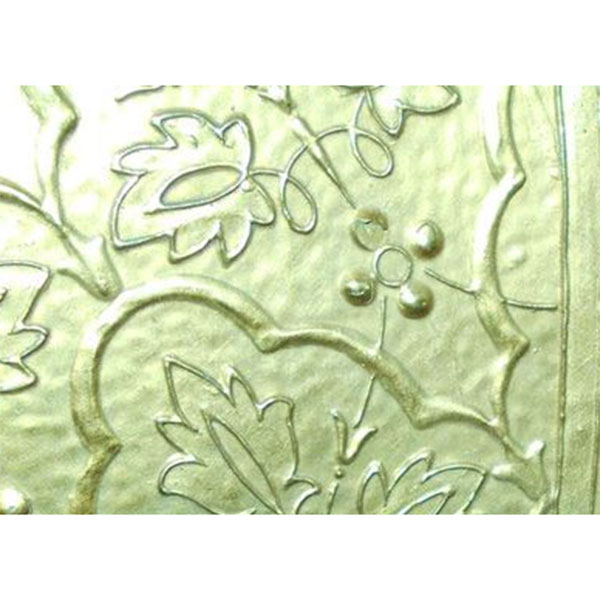
Detail of Raised Gold
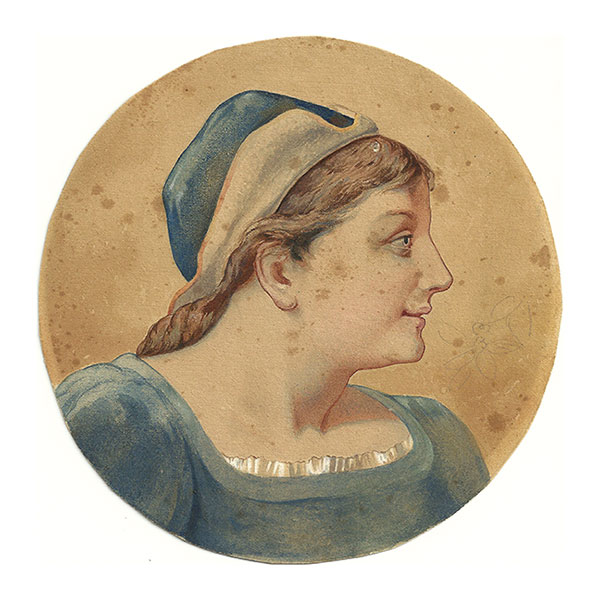
Mistress Ford Watercolor
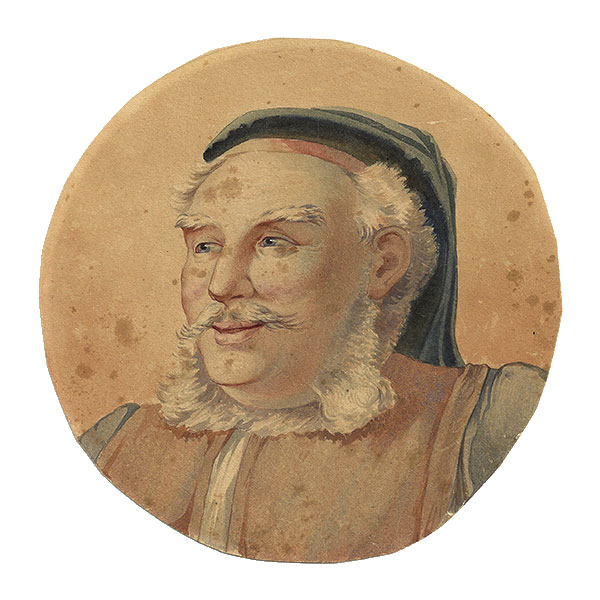
Falstaff Watercolor
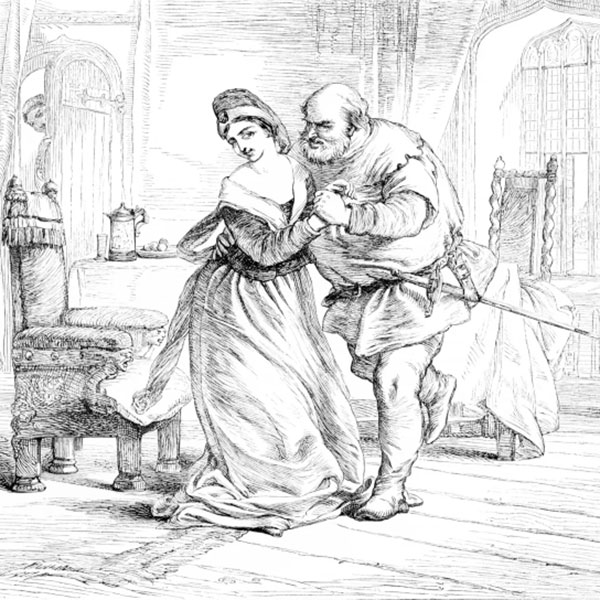
Falstaff and Mistress Ford
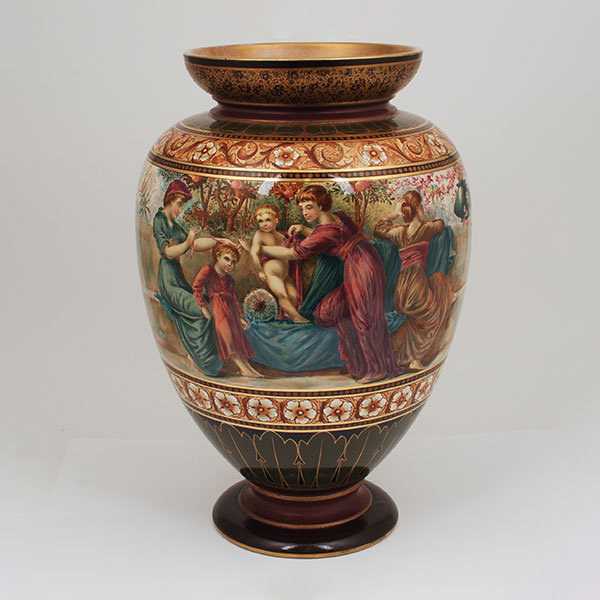
Doulton J. P. Hewitt
